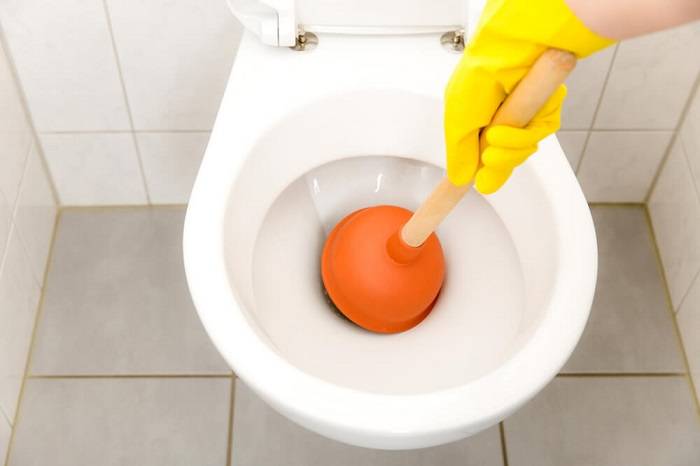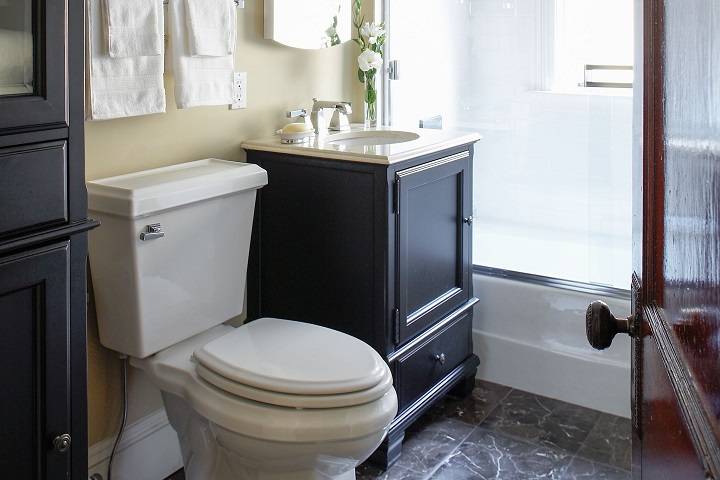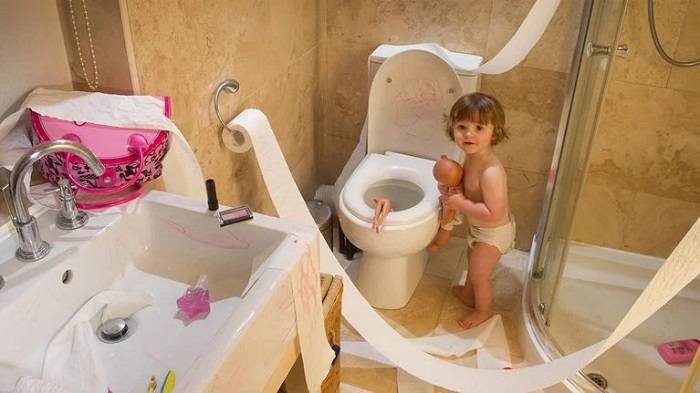A clogged toilet is one of the most common household plumbing issues and can quickly become a major inconvenience. Whether it’s due to a minor blockage or a more serious plumbing problem, knowing how to effectively unclog a toilet is essential for maintaining a functional bathroom. This comprehensive guide will explore various methods for unclogging a toilet, offer tips for preventing future clogs, and discuss when to call a professional plumber.
Understanding the Causes of Toilet Clogs
Common Causes of Clogs

To effectively unclog a toilet, it’s helpful to understand what might be causing the blockage. Common causes include:
- Excessive Toilet Paper: Flushing too much toilet paper can easily lead to a clog, especially if the toilet paper doesn’t dissolve quickly.
- Non-Flushable Items: Items like wipes, sanitary products, and cotton balls can cause severe blockages since they do not break down like toilet paper.
- Foreign Objects: Toys, personal care products, and other foreign objects accidentally flushed can obstruct the flow.
- Tree Roots: In older homes, tree roots can invade sewer lines, causing clogs and potential damage to the plumbing system.
Signs of a Clogged Toilet
Before attempting to unclog a toilet, it’s important to identify the signs of a clog:
- Slow Draining: Water drains slowly from the bowl, indicating a partial blockage.
- Backed-Up Water: The toilet bowl fills up and may overflow, especially after flushing.
- Gurgling Sounds: Unusual gurgling noises from the toilet or nearby drains can signal a clog in the plumbing system.
Methods for Unclogging a Toilet
Using a Plunger
A plunger is often the first tool to reach for when dealing with a clogged toilet. Here’s how to use it effectively:
a. Choose the Right Plunger
- Flange Plunger: For toilets, use a flange plunger, which has a bell-shaped end designed to fit into the toilet drain.
- Cup Plunger: For sinks and tubs, a cup plunger is more appropriate.
b. Steps for Using a Plunger
- Ensure Proper Seal: Place the plunger over the toilet drain, ensuring a good seal. The flange should fit snugly into the drain opening.
- Plunge Firmly: Push the plunger down firmly, then pull up with equal force. Repeat this process several times, maintaining the seal.
- Check for Results: After plunging, flush the toilet to see if the water drains properly. If the toilet is still clogged, repeat the process.
Using a Toilet Auger
If plunging doesn’t resolve the clog, a toilet auger (also known as a closet auger) can help reach and break up more stubborn blockages.
a. Selecting the Right Auger
- Manual Toilet Auger: A hand-operated tool with a flexible cable designed to reach deeper into the toilet drain.
- Power Auger: For more severe clogs, a power auger may be used, though it is typically reserved for professional plumbers.
b. Steps for Using a Toilet Auger
- Insert the Auger: Carefully insert the auger’s head into the toilet bowl, aiming for the drain opening.
- Crank the Handle: Turn the auger’s handle to feed the cable into the drain. Continue cranking until you feel resistance or the auger breaks through the clog.
- Retrieve the Auger: Slowly pull the auger back out, removing any debris attached to the cable.
- Flush the Toilet: Test the toilet by flushing it to see if the clog has been cleared. Repeat the process if necessary.
Using Baking Soda and Vinegar
For a natural and less invasive approach, baking soda and vinegar can help dissolve minor clogs and clean the toilet.
a. Preparing the Solution
- Ingredients: Use about one cup of baking soda and one cup of vinegar.
- Steps: Pour the baking soda into the toilet bowl, followed by the vinegar. Allow the mixture to sit and fizz for 10-15 minutes.
b. Flushing the Toilet
- Flush: After the waiting period, flush the toilet to see if the mixture has helped clear the blockage. If necessary, repeat the process.
Using a Plumbing Snake
A plumbing snake, also known as a drain snake, can be used for more persistent clogs that other methods cannot resolve.
a. Choosing the Right Snake
- Manual Plumbing Snake: For home use, a manual plumbing snake can be sufficient for most clogs.
- Power Snake: For severe clogs, a power snake may be required, usually operated by professionals.
b. Steps for Using a Plumbing Snake
- Insert the Snake: Feed the snake into the toilet drain and turn the handle to advance it further into the pipe.
- Break Through the Clog: Continue to rotate the snake until you feel the blockage break up or pass.
- Remove the Snake: Pull the snake back out and clean it. Flush the toilet to ensure that the clog has been cleared.
Using a Wet/Dry Vacuum
A wet/dry vacuum can be an effective tool for removing clogs, especially if other methods have failed.
a. Preparing the Vacuum
- Setup: Ensure the vacuum is set to handle liquid and has a hose attachment that fits snugly into the toilet drain.
- Precautions: Use gloves and take safety precautions to avoid any mess or damage.
b. Steps for Using a Wet/Dry Vacuum
- Create a Seal: Place the vacuum hose into the toilet bowl, creating a tight seal.
- Turn on the Vacuum: Power up the vacuum and allow it to suck out the clog and water from the bowl.
- Dispose of Debris: Clean the vacuum and dispose of any debris removed from the drain.
- Flush the Toilet: Check if the clog has been cleared by flushing the toilet.
Prevention Tips to Avoid Future Clogs
Avoid Flushing Non-Flushable Items
To prevent clogs, avoid flushing items such as:
- Wipes: Even those labeled as flushable can cause blockages.
- Sanitary Products: Tampons and pads should be disposed of in the trash, not the toilet.
- Paper Towels: These do not dissolve like toilet paper and can create blockages.
Use Toilet Paper Wisely
- Moderation: Use only the amount of toilet paper necessary to avoid overloading the system.
- Disposal: If you notice a lot of paper accumulating, consider flushing in smaller amounts.
Regular Maintenance
- Clean the Toilet Regularly: Regular cleaning helps prevent buildup that can contribute to clogs.
- Inspect for Issues: Periodically check for any signs of plumbing problems, such as slow drainage or unusual noises.
When to Call a Professional
Persistent Clogs
If your efforts to unclog the toilet are unsuccessful, it may be time to call a professional plumber. Persistent clogs could indicate more serious issues, such as:
- Main Sewer Line Problems: Blockages in the main sewer line can affect multiple fixtures and require professional intervention.
- Pipe Damage: Structural issues with the pipes may need repair or replacement.
Frequent Clogs
Frequent clogs suggest that there may be an underlying issue with your plumbing system. A professional plumber can:
- Conduct Inspections: Use specialized tools to inspect the pipes and identify the root cause of recurring clogs.
- Provide Solutions: Recommend repairs or upgrades to prevent future problems.
Related Post:
Kill Tooth Pain Nerve in 3 Seconds Permanently: Exploring Effective Solutions and Misconceptions
Alan Ritchson Movies and TV Shows: A Comprehensive Career Overview
Amanda Bynes Movies and TV Shows: A Comprehensive Career Retrospective
Unclogging a toilet can range from a simple DIY task to a more complex plumbing issue, depending on the severity of the blockage. By using the right tools and techniques, you can often resolve minor clogs yourself. However, understanding when to seek professional help is crucial for more persistent or severe problems. Regular maintenance and awareness of what should and shouldn’t be flushed can help prevent future clogs and ensure a smoothly functioning toilet.



